The “Greater” UN Coalition during the Korean War
The UN coalition that participated in the Korean War was composed of 63 nations and represented the first UN peace enforcement operation.

A blog of the History and Public Policy Program
The UN coalition that participated in the Korean War was composed of 63 nations and represented the first UN peace enforcement operation.
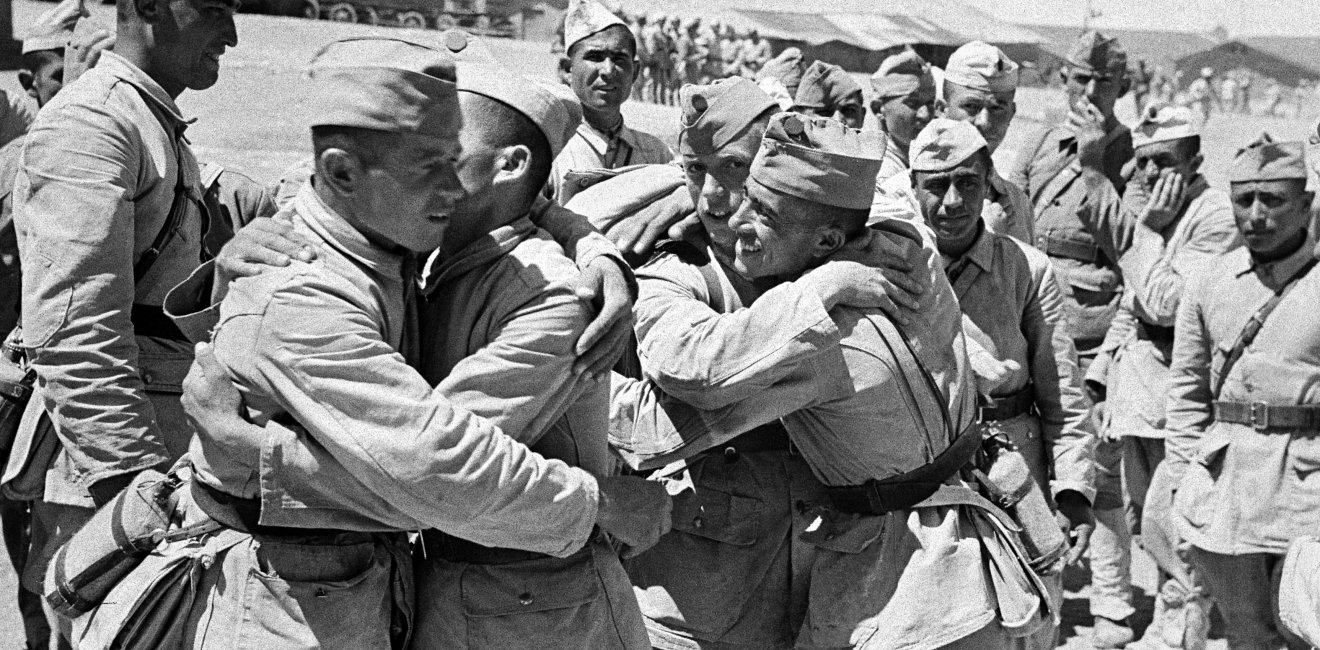
In a chapter titled “Uncommon Coalition” in Brothers At War: The Unending Conflict in Korea, Sheila Miyoshi Jager discussed the unprecedented coalition of 58 nations (48 UN, 7 non-UN, occupied Japan and West Germany, and South Korea) that “participated” in the Korean War as combatants, non-combatants, and providers of materiel and funds for humanitarian aid and reconstruction. Furthermore, the chapter included in the South Korean component the tens of thousands of Korean soldiers – KATUSAs for US and KATCOMs for British Commonwealth units – who augmented several other national armies (American, British, Australian, Canadian, French, Dutch, and Belgian) and the 100,000 man labor force known as the Korean Service Corps (KSC) that provided logistical and engineering support to the UN Command.
A closely related study by Jiyul Kim in The Ashgate Research Companion to the Korean War (2014) provided additional details on the Korean augmentee soldiers and the KSC. Kim observed that:
“the story of the UNC [United Nations Command] as a uniquely complex coalition also points to how the Korean War transformed the way in which modern wars can be fought, not just as ‘limited wars,’ but with a multinational, multicultural, and multiracial coalition force under the UN flag…the war contributed to bringing the non-communist nations together [during the Cold War] based on the idea of collective security under the UN banner [that was a major factor] in shaping the world after the Korean War armistice.” [1]
Until these studies, the Korean War UN coalition was portrayed as composed of 22 nations: the 16 nations that sent combat forces to join South Korea’s and the five nations that provided medical units. It was a novel concept to expand the coalition to encompass nearly two thirds of the 90 some sovereign nations that existed at the time, as well as including the Korean augmentation and labor force, as part of the UN coalition.
It seems the concept has gained firm footing within South Korea. The bastion of South Korean memory of the Korean War, the War Memorial in Seoul, recently revamped its Korean War exhibits. Previously, the exhibits, while acknowledging the significant role played by the US and the UN, tended to marginalize their part in the war. The new exhibits now grandly highlight the 63 nations (the small discrepancy with Jager’s 58 nations not withstanding) that helped South Korea.
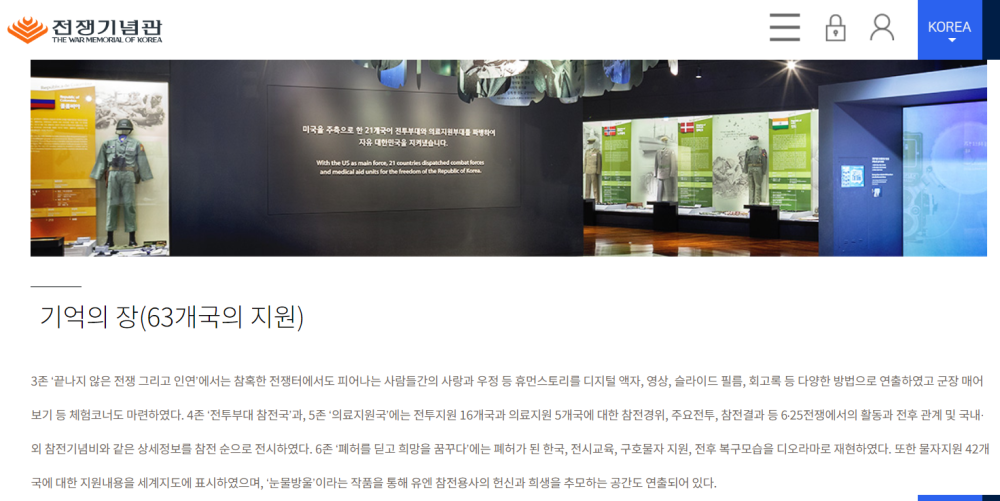
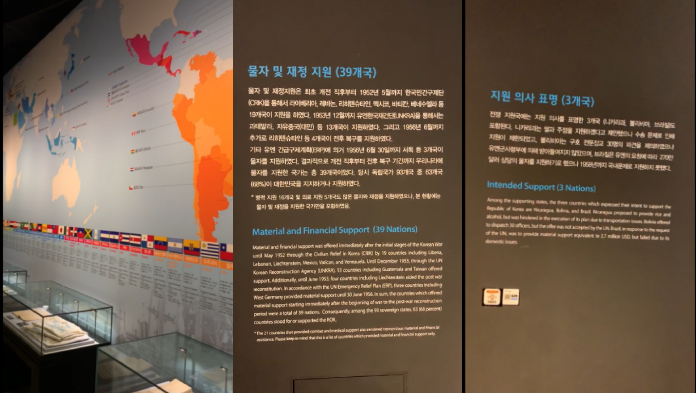
This new interpretation of the UN coalition was accompanied by the free distribution of an elaborate volume, titled Korean War 1129, an annotated chronology of the 1,129 days of the war from 25 June, 1950 to 27 July, 1953, by Lee Joong Keun (Yi Chung-kŭn), Chairman of the Booyoung Group, an international real estate development corporation. A Korean edition in 2014 was followed in 2015 by an English edition. While the narrative does not draw special attention to the 63 nations as a group, the cover and a special foldout do.
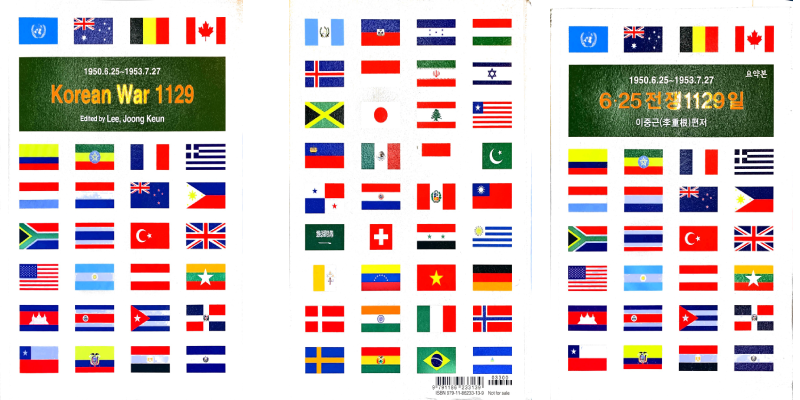
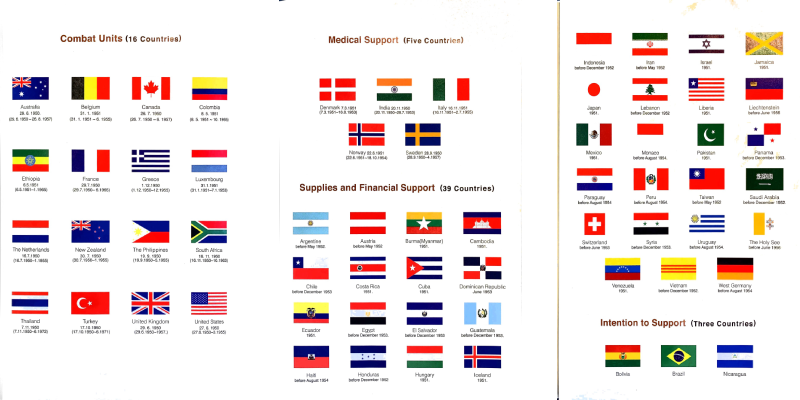
One curious feature is, as in the War Memorial exhibit, the book gives equal space to all nations. The US does not visually occupy a special position but is rather “equal” to even the three nations that offered aid but for various reasons could not follow through.[2]
The necessity for reexamining the composition, duration, and the impact of the Korean War UN coalition is more apparent when we consider that it was the first UN peace enforcement operation, the aggressive and muscular counterpart to peacekeeping operations. Its importance lies in its success. As Jiyul Kim stated in his Ashgate chapter, “the perception lingers that the UN coalition was more a political symbol of international solidarity than of a substantive military organization…the UN coalition played a key role in the outcome of crucial battles and campaigns and thus the course of the war…but…the greatest legacy of the UN coalition was its impact in resolving conflicts after the Korean War, for it established the enduring principle that the UN has a key political and military role in resolving conflicts through peace enforcement and peacekeeping operations.”[3]
[1] Jiyul Kim, “Chapter 21: United Nations Command and Korean Augmentation,” in James I. Matray and Donald W. Boose, Jr., eds, The Ashgate Research Companion to the Korean War (Ashgate, 2014), 294.
[2] Lee Joong Keun, Korean War 1129 (Seoul: Woojung Publishing, 2015); Yi Chung-kŭn, 6-25 Chŏnjaeng 1129-il (Ujong mungo, 2014).
[3] Kim in Ashgate, 283.

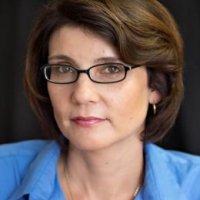

A leader in making key foreign policy records accessible and fostering informed scholarship, analysis, and discussion on international affairs, past and present. Read more


The North Korea International Documentation Project serves as an informational clearinghouse on North Korea for the scholarly and policymaking communities, disseminating documents on the DPRK from its former communist allies that provide valuable insight into the actions and nature of the North Korean state. Read more


The Cold War International History Project supports the full and prompt release of historical materials by governments on all sides of the Cold War. Read more



